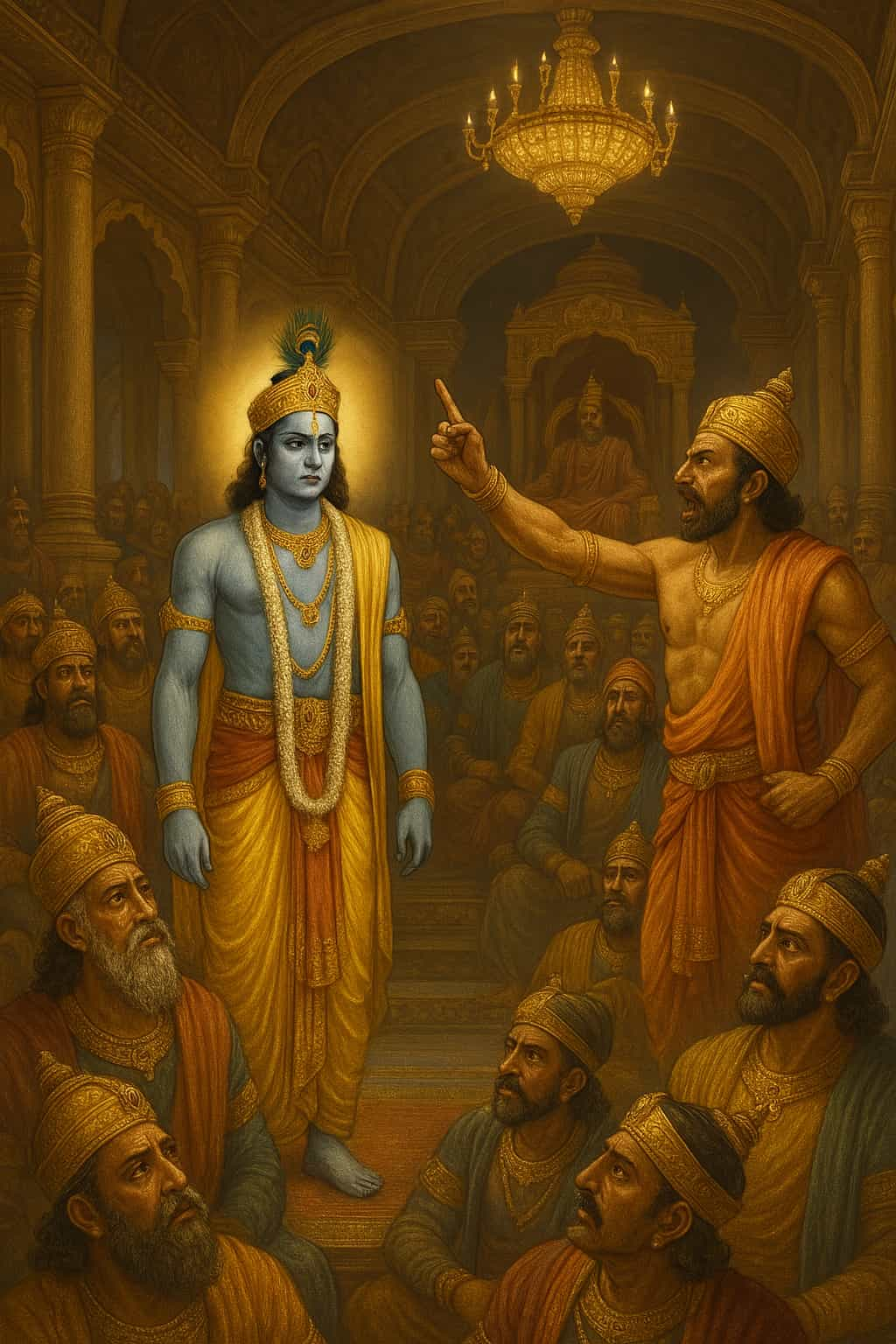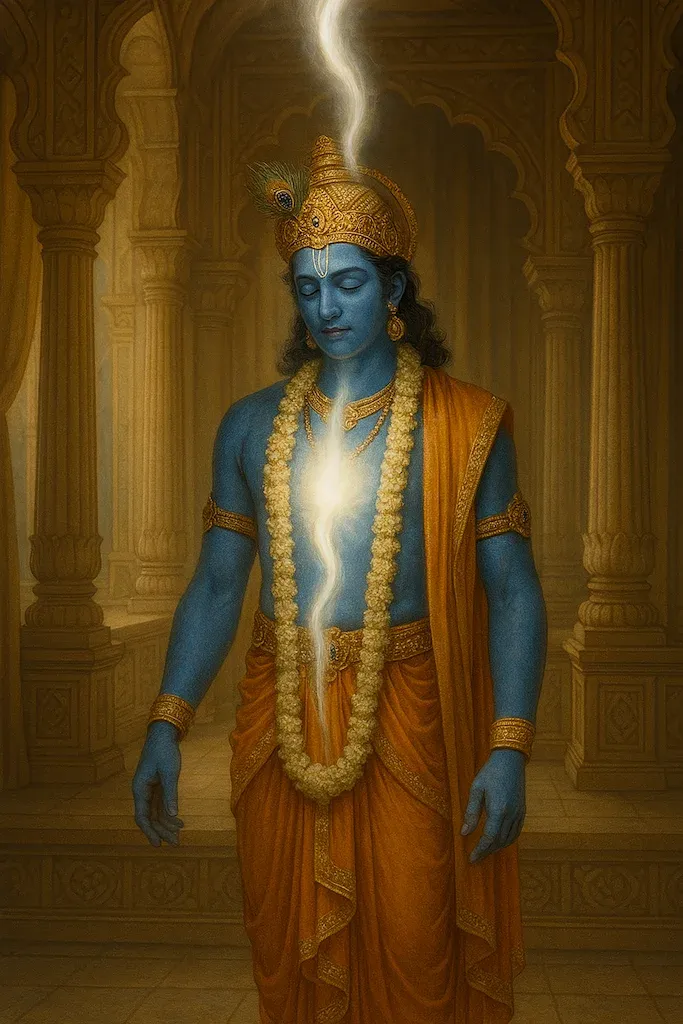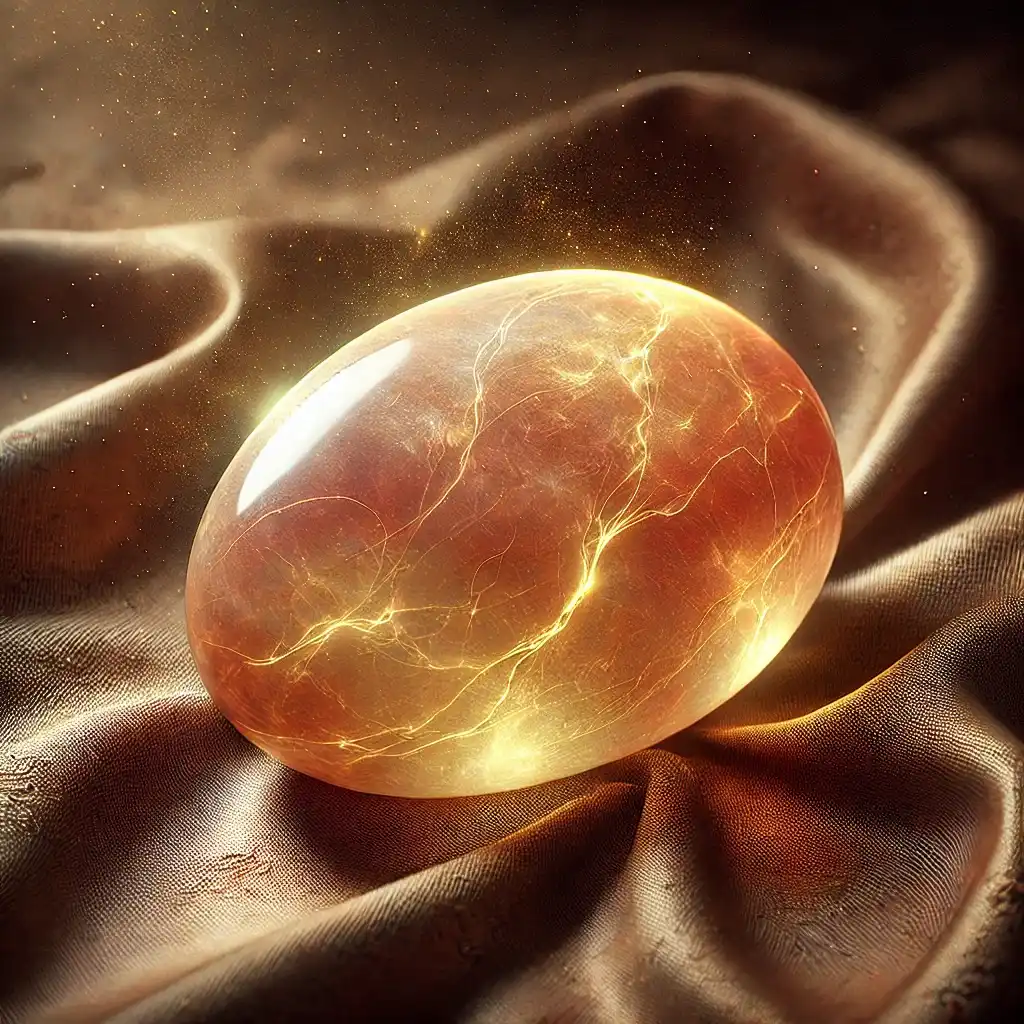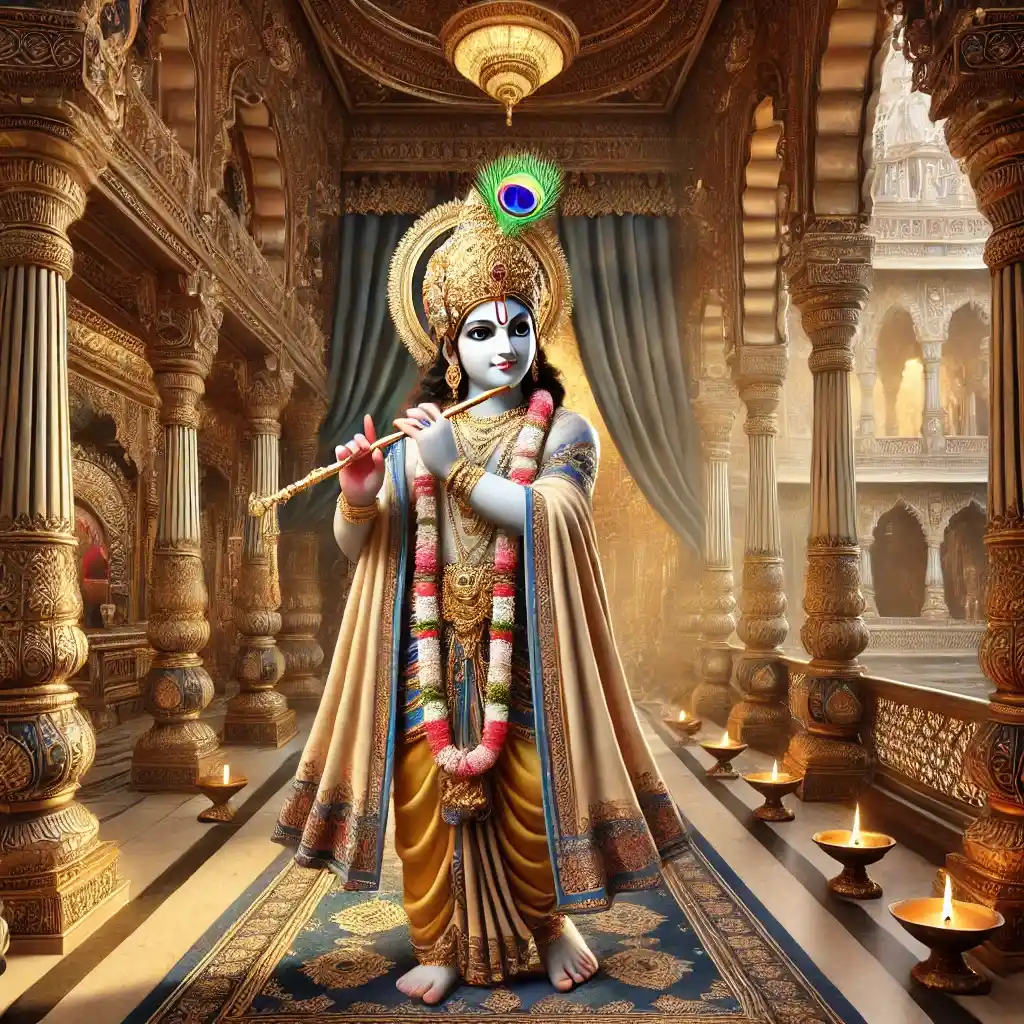In the Seventh Canto of the Shrimad Bhagavatam, Parikshit poses a profound and thought-provoking question to the sage Shukadev Goswami: If the Supreme Lord is truly impartial and equal to all, why does He appear to favor the devatas (celestial beings) over the daityas (demons)? This question arises as Parikshit reflects on numerous events in divine history where God intervenes on behalf of the devatas while seemingly punishing or destroying the daityas.
This blog delves into that very question as addressed by Shukadev ji through the dramatic story of Shishupal, an enemy of Shree Krishna who ultimately attained liberation. The story uncovers the deeper truths behind divine justice, grace, and spiritual purification demonstrating that God’s actions, though sometimes misunderstood, are always aligned with the ultimate good of the soul.
Shishupal’s Birth and the Prophecy
Shishupal's story, as told in the Shrimad Bhagavatam, is as mystical as it is tragic. From the moment of his birth, it was clear that his life would not follow an ordinary path. He was born with three eyes, four arms, and an unmistakable aura of hostility. His mother, horrified by his unusual form, was overwhelmed and even considered abandoning him. But at that moment, the great sage Narad appeared.

Narad revealed a prophecy: the child’s abnormal limbs would disappear when placed in the lap of the one destined to kill him. Later, when Shishupal was placed in the lap of Shree Krishna, the extra limbs vanished, and he assumed a normal human form.
Alarmed and heartbroken, Shishupal’s mother pleaded with Shree Krishna to spare her son’s life. Moved by her maternal devotion, Shree Krishna made a solemn vow: He would forgive Shishupal for one hundred offenses. Only when that limit was crossed would He act.
The Rajasuya Yagya and Shishupal’s Liberation
Years later, during the Rajasuya Yagya organized by Yudhishthir, Shree Krishna’s promise was put to the ultimate test. As part of the ceremony, Yudhishthir and the assembled kings agreed that the first puja would be made to Shree Krishna.

However, one voice rose in bitter protest: Shishupal’s. His long-held hatred toward Shree Krishna flared into open rage. He stood in the assembly and launched a vicious verbal assault. He ridiculed Shree Krishna’s upbringing as a cowherd, questioned His divine lineage, and mocked His dual identity—as the son of both Devaki-Vasudeva and Yashoda-Nanda.
With every insult, Shree Krishna remained silent, unwavering, and composed. True to His word, He counted the offenses silently. At the hundredth insult, the line had been crossed. Shree Krishna, still calm and controlled, invoked His sudarshan chakra. In a swift, effortless motion, the spinning disc severed Shishupal’s head from his body. But what happened next left everyone stunned.
From Shishupal’s body emerged his soul which ascended and merged into the divine form of Shree Krishna. This was no ordinary death. It was liberation. In spite of his enmity, Shishupal’s constant focus on the Lord—even through hatred—had purified his soul. His life ended not in defeat, but in union with the very God he opposed.

Liberation Through Hatred? Understanding Divine Alchemy
When this happened, Yudhishthir turned to Narad and asked how a demon like Shishupal could attain liberation after being slain by Shree Krishna. Naradji explained that no matter the emotion—desire anger, fear, affection, or even a sense of unity—if the mind is directed toward God, it is directed to the right place. Such focus naturally purifies the consciousness.
This is illustrated through the analogy of Paras, the mythical philosopher's stone, which turns iron into gold upon contact. Whether the iron is touched intentionally, accidentally, or even struck against it in frustration, it is still transformed into gold. The transformative power of Paras is not dependent on the attitude of the one who touches it. In the same way, God is even more powerful than Paras—His grace acts regardless of the sentiment through which one approaches Him.

Even the Gopis of Vrindavan, who loved Shree Krishna simply for His beauty and charm, unaware of His divinity, were ultimately granted the highest spiritual realm of Goloka because their love was directed toward the right person. This is why one of the qualities of the Supreme Lord is described as the giver of liberation even to those He slays.
Shishupal’s mind was completely absorbed in Shree Krishna, even if it was through hostility. His hatred, though impure in emotion, had purity in focus. This unbroken remembrance, even in anger, gradually purified his consciousness. In the moment of death, the ego dissolved, and the soul merged with the divine.
Conclusion
So, is God partial?
No. What one perceives as partiality is actually the play of divine wisdom. While the devatas may receive support in one instance, and daityas face destruction in another, both are ultimately recipients of the same grace—the opportunity for liberation.
This story calls upon seekers to look beyond superficial morality and understand the mechanics of divine consciousness. It urges everyone to purify their focus, to remember God consistently, and to aim for sincerity in their spiritual pursuit. Ultimately, what matters most is not how one feels, but whom one thinks about. In the case of Shishupal, his mind, even in rage, was fixed on Shree Krishna—and that made all the difference.
Frequently Asked Questions (FAQs)
1. Why does God seem to favor devatas over daityas in the Shrimad Bhagavatam?
God’s actions are driven by divine wisdom, and both devatas and daityas ultimately receive the same opportunity for liberation, regardless of their roles.
2. How did the prophecy at Shishupal’s birth influence his fate?
The prophecy foretold that the one who would remove Shishupal's extra limbs would also be his killer. When Shishupal was placed on Shree Krishna’s lap, his limbs vanished, confirming Shree Krishna as his destined end.
3. How did Shishupal attain liberation despite his hatred for Krishna?
Shishupal’s constant focus on Shree Krishna, even through hatred, purified him leading to his liberation when his soul merged with Krishna after death.
4. What does the Paras stone analogy teach us about God’s grace?
Like the Paras stone transforms iron into gold regardless of intent, God’s grace purifies the mind and leads to liberation, no matter the emotion through which one approaches Him.
Call to Action
Keep your mind engaged in God by listening to Swami Mukundananda’s Srimad Bhagavatam series on YouTube.
Raise your devotional vibrations by participating in the Bhakti Kirtan Retreat from April 18-20, 2025 at the Radha Krishna Temple of Dallas.
Resources
Specific Blog
The Beginning of Kali Yuga: Parikshit's Curse and the Rise of Darkness
Shukadev: The Eternal Voice of the Srimad Bhagavatam







